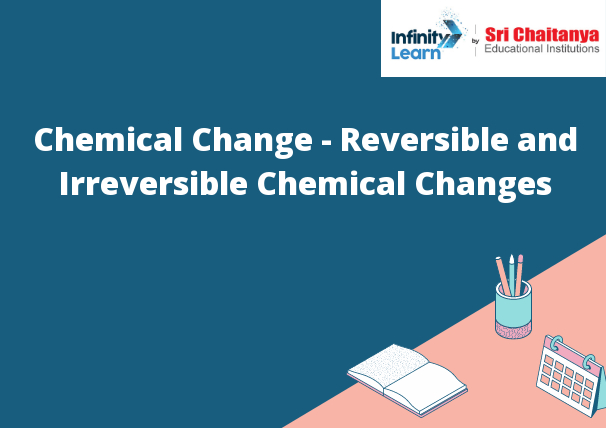Table of Contents
Chemical Change: Reversible & Irreversible Changes
A chemical change, also known as a chemical reaction, refers to a process in which one or more substances undergo a transformation, resulting in the formation of new substances with different chemical properties. During a chemical change, the arrangement of atoms or molecules is altered, leading to the breaking and formation of chemical bonds.
- A reversible change is a change in which the original substance can be restored by reversing the chemical reaction.
- An irreversible change is a change in which the original substance cannot be restored.

Chemical Changes
A chemical change is a process that alters the chemical composition of a substance. This can be done by adding or removing atoms, or by rearranging the atoms in a substance. Many chemical changes are reversible, meaning the original substance can be restored by reversing the change. Some chemical changes, however, are permanent and cannot be reversed.
Reversible Change
- A reversible change is a change that can be undone. For example, when water turns to ice, that change is reversible because we can heat the ice up and turn it back into water. When sugar dissolves in water, that change is reversible because we can add more sugar to the water and it will dissolve again.
- The world around us is constantly changing. Sometimes the change is so gradual that we may not even notice it. Other times, the change is more dramatic and can be quite shocking. Despite the type of change, one thing is always true – change is inevitable.
- One of the most common types of change is reversible change. This is when a substance changes from one state to another and then back to its original state. For example, when water freezes, it turns into a solid. When it warms up, it turns back into liquid water. reversible change
- Reversible change is important because it helps keep the world in balance. For example, when water turns into ice, it helps to cool the earth. When it turns back into liquid water, it helps to heat the earth. reversible change
- Reversible change can also be helpful in our everyday lives. For example, when we cook food, it changes from a solid to a liquid. When we eat the food, it changes from a liquid to a solid. This is called digestion. reversible change
- While reversible change is helpful, it can also be dangerous. For example, when water turns into ice, it can cause roads to freeze over. This can make it difficult for cars to drive on the roads. reversible change
- Despite the dangers, reversible change is a necessary part of the world. It helps to keep the world in balance and it helps us to live our lives.
Irreversible Change
- There are some chemical changes that are irreversible. This means that once the change occurs, it cannot be undone. For example, when aluminum is combined with oxygen in the air, it forms a thin, protective layer of aluminum oxide. This layer is very hard and cannot be undone.
- What is change? Change is defined as a process of becoming different. It can be a physical change, such as a transformation of a substance into a new form, or a chemical change, such as the combination of two or more substances to form a new compound. It can also be an alteration in character, or an event that occurs in the course of time. Most changes are gradual and often undetectable, but sometimes they are sudden and dramatic.
- There are two types of change: reversible and irreversible. Reversible change is change that can be reversed, or changed back to the way it was before. Irreversible change is change that cannot be reversed, or changed back to the way it was before.
- Some changes are reversible, while others are irreversible. A reversible change is one that can be undone, or changed back to the way it was before. An example of a reversible change is a chemical reaction that can be reversed by adding the correct chemicals. Most physical changes are reversible, such as melting and freezing.
- An irreversible change is one that cannot be undone, or changed back to the way it was before. An example of an irreversible change is a chemical reaction that cannot be reversed by adding the correct chemicals. Most physical changes are irreversible, such as melting and freezing.
- Irreversible changes are often permanent, and can have a significant impact on the world. Some irreversible changes, such as the melting of the ice caps, can have a devastating impact on the environment. Others, such as the development of nuclear weapons, can have a devastating impact on human society.
- Irreversible changes are an important part of history. They can change the course of events, and have a lasting impact on the world. Some irreversible changes, such as the invention of the printing press, have had a positive impact on human society. Others, such as the development of nuclear weapons, have had a negative impact on human society.
- Irreversible changes are an important part of our lives. They can change the way we live, and the way we think. Some irreversible changes, such as the invention of the printing press, have had a positive impact on our lives. Others, such as the development of nuclear weapons, have had a negative impact on our lives.






